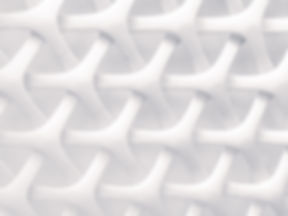What to do when sewage backs up into your home.

Heavy storms, blockages, breakdown in sewer pipes or septic tanks, equipment failure, or a flooded leach field can cause sewage to back up into the home through floor drains or even plumbing fixtures. In addition to the unpleasant odor that comes with sewage backing up into the home, property damage and unhealthy living conditions are likely to occur. It is important that the affected area be properly cleaned and disinfected as soon as possible to prevent illness or further damage. The longer the sewage is present in the home, the higher the risk of disease or permanent damage. Can the sewage make me sick? When you have a backup of sewage in your home, it is important to remember that sewage contains bacteria, fecal material, viruses, and other hazardous microorganisms that can cause illness. The health risks associated with sewage contamination are dependent on exposure. Gastrointestinal illness (GI) is possible through direct or indirect, accidental ingestion. Skin infections and rashes are possible when contaminants or contaminated surfaces come in direct contact with the skin. Odors from sewage backups, while unpleasant, are generally not harmful. There are things you can do to prevent exposure or illness when dealing with a sewage spill in your home: • Keep children and pets out of contaminated area until it is properly cleaned and disinfected • Avoid contact with skin, especially open cuts or lesions • Wear protective clothing and equipment while working in contaminated areas (see below) • Wash hands frequently • Launder clothes you are wearing during cleanup separately Contact your physician if you experience any GI symptoms, such as diarrhea, nausea, or vomiting. How do I protect myself when cleaning up sewage? Before beginning any cleanup, it is important to protect yourself by wearing appropriate protective clothing and equipment. You should wear waterproof boots, gloves, and eye protection, as well as clothing that can be washed or discarded. A protective mask such as an N95 mask (available at most hardware stores) is also recommended to avoid breathing any airborne microorganisms. Make sure the area is well ventilated during the cleanup process with plenty of fresh air.

Cleaning Up After a Sewage Backup How do I clean up the affected area? 1. Moisture Control – Begin by lowering the humidity in the affected area and removing as much moisture as possible. Use a submersible pump, mop, wet vac or squeegee to remove any standing water in the affected area. Open doors and windows to “air out” the affected area, especially in confined spaces like closets and cabinets. Use a dehumidifier, fans, or window air conditioners to help lower the humidity level.
2. Discard – Any porous or absorbent material that has come into contact with sewage should be discarded unless it can be thoroughly cleaned and disinfected. Examples of materials that should be discarded include: cardboard, books and paper products, cosmetics, food, mattresses and pillows, medicines and medical supplies, stuffed animals, upholstered furniture, wallboard (drywall) and unfinished wood products. Carpeting and padding generally should be removed and replaced. Carpeting or upholstered furniture may be saved if it can be thoroughly steam cleaned, but padding should still be discarded and replaced. Consult with a water restoration professional to determine if carpeting or upholstered furniture can be steam cleaned and disinfected.
3. Clean & Disinfect – Clean all hard surfaces with a mild detergent (e.g. dish soap) and hot water. If surfaces are not clean and free of dirt, disinfection will not be effective. Surfaces should be disinfected using a household cleaner that is labeled as bactericidal (kills bacteria) or a chlorine bleach solution. US EPA recommends a solution of ½ cup of chlorine bleach per gallon of water. Disinfecting solution should remain in contact with contaminated surfaces for at least one minute. NOTE: You must be very careful about mixing household cleaning chemicals and disinfectants when cleaning. Some chemicals when mixed can produce harmful vapors (e.g. ammonia based cleaners mixed with chlorine) and ca
n result in severe illness or even death. The area should be well ventilated during the cleaning process. Contaminated clothing may be salvageable if cleaned properly. Clothing should be washed in hot water with chlorine bleach if possible, or professionally dry cleaned.
4. Dry – After cleanup and disinfection is complete, it is important that the area be dried out thoroughly to prevent mold growth. Areas that are wet for more than 24-48 hours are especially at risk for mold growth. Move all furniture away from walls and keep closet and cabinet doors open to allow air circulation. Use dehumidifiers to remove moisture from the air and fans to aid in circulation to keep the area well ventilated until completely dry.
Where can You get more information?
Ohio Department of Health Residential Water & Sewage Program

























